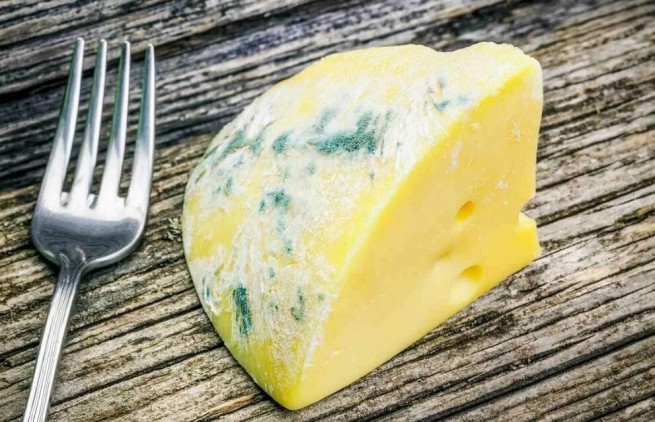Many of us wonder whether we can simply cut off the spoiled parts of the cheese or whether we should throw the entire piece away. Experts offer some advice on whether moldy cheese is safe to eat and when it should be thrown in the bin.
Mold is a microorganism that typically grows in the presence of oxygen. “The main reason for the appearance of mold on the surface of cheese is the presence of oxygen and moisture on its surface.” explains Pratik Sharma, an assistant professor at the University of Utah and a fellow in the dairy division of the Institute of Food Technologists.
However mold is not always a problem. Some cheeses, such as blue cheese and Camembert, are made with mold added. The mold in these cheeses is edible and does not pose a health risk, Dr. Sharma emphasizes.
Chad Galer, vice president of product innovation and food safety at Dairy Management Inc., states that Hard and semi-hard cheeses such as Parmesan and cheddar can be eaten after cutting off the mold..
“Make sure you cut at least an inch from the edge and do not let the knife touch the surface to prevent further contamination. This only applies to small mold stains. If most of the cheese is covered with microorganisms, it should be discarded“Gahler adds.
The US Department of Agriculture (USDA) also recommends cutting off at least an extra centimeter around the area of mold on hard cheeseso that it is safe to eat. However mold can quickly spread to soft cheesesso if mold appears on cream cheese or cottage cheese, It’s better to throw away the entire piece/container of cheese.
Dr. Sharma more strictly recommends throwing away moldy cheeses for quality reasons. “Mold can produce compounds that can leach into the cheese, causing health problems or affecting its quality. Therefore, it is always better to throw away moldy cheese.“, he says.
“In most cases, mold present in cheese does not pose a serious health risk, but it can change the consistency, texture and taste of the product.“, he adds.
No matter what kind of cheese you prefer, never eat cheese with dark gray or black mold. According to the expert, it is most likely Aspergillus niger, a mold that can produce toxins that cause disease.
Oxygen is the enemy, so proper storage is key to preventing mold from growing on your cheese. “Wrap cheese in parchment paper or aluminum foil to protect it and prevent mold from developing“, suggests Galer.
“Vacuum sealing is another option. Mold needs oxygen to grow, so vacuum packaging can help cheese last even longer.“, he concludes.







More Stories
In Switzerland, a statue of a tramp was installed in the lobby of a luxury hotel.
Fight cockroaches: how to get rid of them at home
Why is cheese yellow?